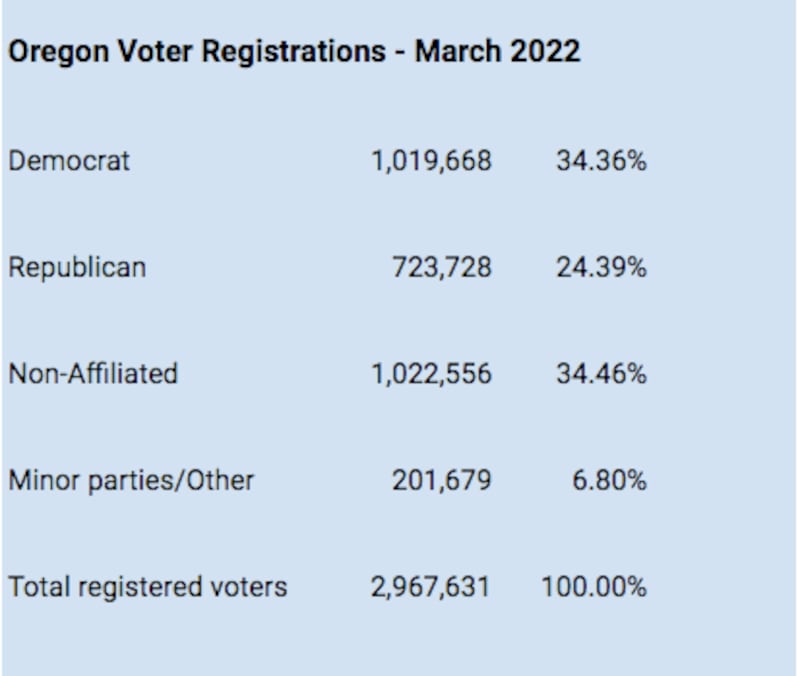For the first time ever, nonaffiliated voters in Oregon outnumber Democrats, having long ago outdistanced Republicans.
That data comes from March voter registration figures posted by the Oregon Secretary of State’s Office.

Nonaffiliated voters have exploded in number since the Oregon’s Motor Voter law went into effect in January 2016. In the month prior, December 2015, there were 825,282 registered Democrats, 642,552 Republicans, 527,302 nonaffiliated voters, and just 2,169,258 voters total.
So in the past six years, Oregon has added nearly 800,000 new voters, almost 500,000 of whom are not registered with any party.
Ed Doyle, president of a group called Oregon Open Primaries, says the takeaway is that the May partisan primaries, which are taxpayer funded, should be open to all voters, not just Democrats and Republicans, and to all candidates. (Non-affiliated and smaller party voters can still vote in non-partisan races in May.)
“It is unconscionable that over 34% of the electorate is barred from voting in publicly funded primary elections,” Doyle said in a statement. “It is high time Oregon modernizes its primary system to allow all registered voters to vote and all qualified candidates to compete.”
Doyle’s group hopes to put an open primary measure on the November general election ballot. Two previous attempts to open Oregon’s primaries failed in past decades. Most recently, Measure 90 got trounced 68% to 32% in 2014.
Proponents say that in addition to allowing greater voter participation, open primaries should moderate the extremism for which partisan primaries are known. More than 20 states have at least some open primaries.
Two of Oregon’s neighbors, California and Washington, hold “top-two” primaries in which all candidates for an office appear on the ballot and the two top vote getters, regardless of party, move to the general election.
